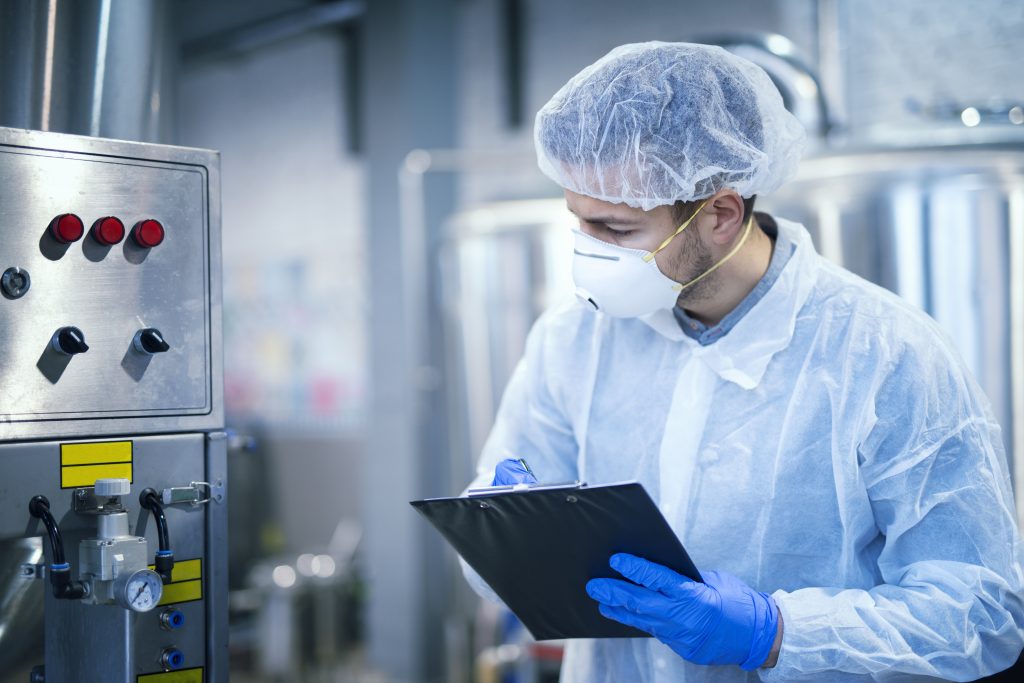Introduction
Food spoilage is a change in quality, making the food less suitable for (human) consumption.
Types of spoilage
- Physical spoilage: hereby the structure of foodstuffs changes, for example: damaged, eaten up, dry, withered, old, rough, limp, soggy.
- Chemical spoilage, for example: denatured, vitamin degradation, decomposition, oxidation.
- Biochemical/enzymatic spoilage, for example: contamination, rancid, stale, discolouration.
- Microbial spoilage (by micro-organisms), for example: putrefaction, fermentation, fungal decay.
Sources of contamination
Food can be contaminated with micro-organisms at various points in the production process.
Primary contamination
Primary contamination occurs when raw materials, auxiliary materials or additives are contaminated.
The degree of contamination is influenced by, among other things:
- the harvesting conditions (moist, overripe fruit spoils faster than dry harvested, unripe fruit);
- slaughter hygiene (inflammation of the intestine);
- the storage conditions and the transport of the raw materials (milk in cans and bulk milk).
Secondary Contamination
Secondary contamination occurs during further processing and preparation of foodstuffs. This contamination can take place via different routes.
Layout of business space, equipment and tools
The company’s layout must prevent contaminated raw materials from coming into contact with processed product. To this end, it is necessary to properly regulate the flow of goods and to have separate areas for raw materials and processed products. The equipment used must therefore not give rise to additional contamination of the product. For this it is necessary that all materials and equipment can be properly cleaned and disinfected and that they are actually properly cleaned and disinfected.
Contamination and prevention
People
People can contaminate the product with microorganisms from:
- hands: micro-organisms from skin flora can be transferred;
- hair, dander: head covering is often obligatory, but it is not sufficient;
- saliva: by talking, coughing and blowing.
Contamination of food can be prevented by measures such as hand hygiene, head covering and mouth cloths.
Water
Water that can come into contact with the product must be of drinking water quality.
Much cooling water is therefore chlorinated to prevent contamination.
Microbiological
It is obvious to demonstrate microbiological spoilage with microbiological methods. The total aerobic mesophilic plate count can be used for this. Depending on the storage conditions, it may be useful, for example, to incubate at a reduced temperature (for psychrophiles in refrigerated products) or under anaerobic conditions (for anaerobes in vacuum-packed products).
Chemical
Spoilage is not only about the high number of micro-organisms in the product (the bacterial count in fermented products is also high), but also about the undesirable substances that are formed by the metabolism of micro-organisms.
Physical
Spoilage can also be demonstrated using physical methods. Depending on the type of product, one can think of changes in pH, electrical conductivity, surface tension, refractive index and viscosity. In the case of meat, in particular, use is made of the water-binding properties as a measure of spoilage.
The above-mentioned methods provide an indication of the changes in a product. However, it is not always possible to indicate a direct relationship with the bacterial count. With many of the chemical and physical methods mentioned, clear results are only obtained if the bacterial counts are already well above the spoilage limit of approximately 10*7 per gram. In practice, microbiological methods (traditional or modern) are the most common.
Related articles to What is Food spoilage and can it be prevented?
Many customers and visitors to this page 'What is Food spoilage and can it be prevented?' also viewed the articles and manuals listed below:



